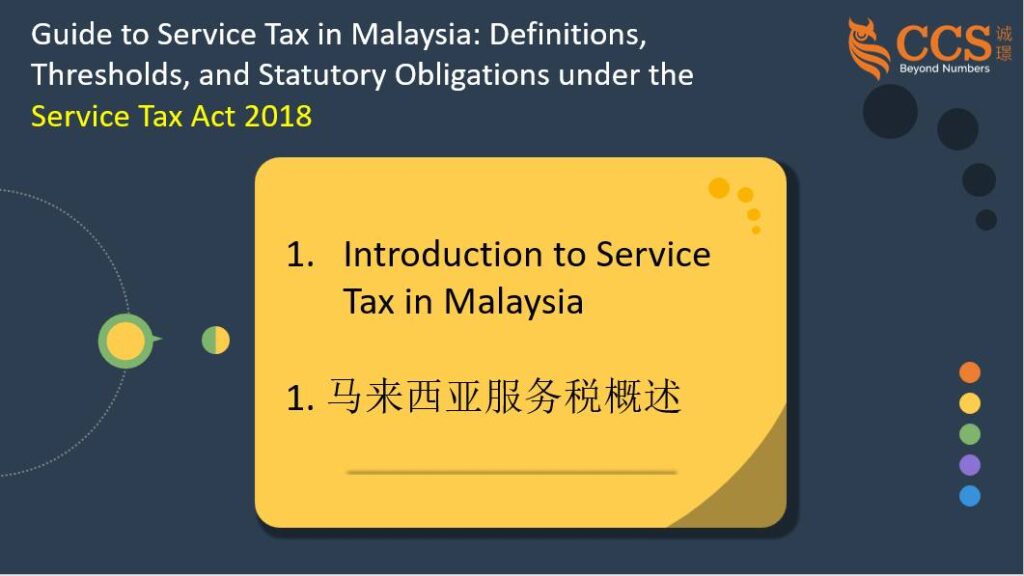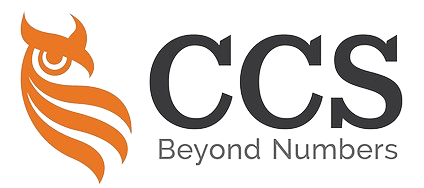
This sharing provides a definitive overview of the Service Tax (ST) framework in Malaysia, focusing on its definition, registration thresholds, and the statutory obligations under Sections 12 and 13 of the Service Tax Act 2018.
It incorporates the latest legislative changes, particularly those effective March 1, 2024, and July 1, 2025, which significantly expand the scope of taxable services and adjust certain thresholds.
The government’s strategic approach involves broadening the tax base for fiscal strengthening while implementing targeted reliefs to mitigate the impact on essential services and micro, small, and medium enterprises (MSMEs).
Understanding these evolving nuances is critical for businesses to ensure compliance, manage financial implications, and adapt to Malaysia’s dynamic tax landscape.
1. Introduction to Service Tax in Malaysia
1.1 Overview of the Sales and Service Tax (SST) System
Malaysia’s Sales and Service Tax (SST) system was reintroduced on September 1, 2018, marking a significant shift back to a single-stage consumption tax regime after the Goods and Services Tax (GST) was replaced, which had been in effect since April 1, 2015.
The SST framework is bifurcated into two distinct components:
- Sales Tax, which is levied on imported and locally manufactured goods, and
- Service Tax, which is imposed on a range of prescribed services.
This report specifically delves into the intricacies of the Service Tax component.
1.2 Evolution and Purpose of Service Tax
The Malaysian government has consistently pursued an expansion of the SST framework as an integral part of its broader fiscal reform agenda, a direction clearly articulated in Budget 2025 on October 18, 2024.
The primary objectives driving these reforms are multifaceted:
- to strengthen the country’s fiscal position, broaden the tax base, ensure sustainable revenue generation to fund essential public services, and establish a more progressive tax structure.
- These initiatives are designed to achieve fiscal resilience while consciously minimizing undue burden on the majority of Malaysian citizens, particularly through the implementation of targeted exemptions and reliefs.
The continuous expansion of the tax base and the adjustments to tax rates, notably the increase in March 2024 and further changes effective July 2025, indicate a strategic and sustained fiscal reform effort by the Malaysian government.
This pattern is not merely a series of isolated adjustments but reflects a deliberate, ongoing policy to enhance fiscal self-reliance and reduce historical dependence on subsidies.
The consistent emphasis on “strengthening the country’s fiscal position” and “broadening the tax base” underscores a long-term governmental strategy aimed at achieving a more robust and diversified national revenue stream.
1.3 Current Service Tax Rates and Effective Dates
Effective March 1, 2024, the general service tax rate was increased from 6% to 8% across all taxable services.
However, in a targeted approach, specific essential services continue to be subject to the previous 6% rate.
These include:
- food and beverage services,
- telecommunication services,
- the provision of parking spaces, and
- logistics services.
For charge card and credit card services, a specific fixed rate of RM25 per year applies to each principal or supplementary card, a rate that has remained unchanged.
The differentiated tax rates, with a general increase to 8% for many services while retaining a 6% rate for essential services and a fixed RM25 for credit cards, coupled with efforts to exempt basic goods and support micro, small, and medium enterprises (MSMEs), highlight a deliberate, progressive tax policy rather than a uniform increase.
This approach aims to broaden the tax base by taxing higher-value and discretionary services more heavily, while consciously mitigating the impact on everyday essentials and smaller economic actors.
The objective is to achieve a more equitable distribution of the tax burden across the economy.
马来西亚服务税全面指南:定义、门槛及《2018年服务税法》下的法定义务
本分享对马来西亚服务税(ST)框架进行了权威性概述,重点阐述其定义、注册门槛以及《2018年服务税法》第12条和第13条规定的法定义务。
此分享也纳入了最新立法变更,特别是2024年3月1日和2025年7月1日生效的条款,这些变更显著扩大了应税服务范围并调整了部分门槛。
政府采取的战略举措包括通过扩大税基以加强财政实力,同时实施针对性减免措施以减轻对基本服务及微型、小型和中型企业(MSMEs)的影响。
企业需深入理解这些不断演变的细节,以确保合规、管理财务影响并适应马来西亚动态的税收环境。
1. 马来西亚服务税简介
1.1 销售与服务税(SST)体系概述
马来西亚销售与服务税(SST)体系于2018年9月1日重新实施,标志着该国在取代自2015年4月1日起实施的商品与服务税(GST)后,重新回归单一阶段消费税制度。
SST框架分为两个独立的组成部分:
- 销售税,适用于进口和本地制造的商品;
- 服务税,适用于一系列指定服务。本报告将重点探讨服务税的具体细节。
1.2 服务税的演变与目的
马来西亚政府一直致力于扩大SST框架,将其作为更广泛财政改革议程的重要组成部分,这一方向在2024年10月18日公布的2025年预算案中已明确阐述。
这些改革的根本目标是多方面的:
- 加强国家财政地位、扩大税基、确保可持续的财政收入以资助基本公共服务,以及建立更具进步性的税收结构。
- 这些举措旨在实现财政韧性,同时有意识地减轻大多数马来西亚公民的负担,特别是通过实施针对性的免税和减免措施。
税收基础的持续扩大以及税率的调整,尤其是2024年3月的增税措施和2025年7月生效的进一步调整,表明马来西亚政府正在进行一项战略性且持续的财政改革努力。
这一模式并非一系列孤立的调整,而是反映了政府旨在增强财政自主权、减少对历史补贴依赖的刻意且持续的政策。
政府对“加强国家财政地位”和“扩大税基”的持续强调,凸显了其旨在实现更加强劲和多元化国家收入来源的长期战略目标。
1.3 当前服务税税率及生效日期
自2024年3月1日起,所有应税服务的一般服务税税率由6%上调至8%。
然而,在有针对性的措施下,部分基本服务仍维持原6%税率。
这些包括:
- 食品饮料服务
- 电信服务
- 停车位提供服务;及
- 物流服务。
对于信用卡和借记卡服务,每张主卡或附属卡每年适用固定税率RM25,该税率保持不变。
通过对许多服务税率普遍上调至8%,同时保留基本服务6%的税率及信用卡固定RM25税率,并结合对基本商品的免税措施及对微型、小型和中型企业(MSMEs)的支持,差异化税率体系凸显了政府采取的渐进式税收政策,而非一刀切的普遍增税。
此举旨在通过对高价值和非必需服务征收更高税率来扩大税基,同时有意识地减轻对日常生活必需品和小微经济主体的影响。
其目标是实现税收负担在经济中的更公平分配。
#看趋势看财税看CCS #马来西亚销售税与服务税 #SST






